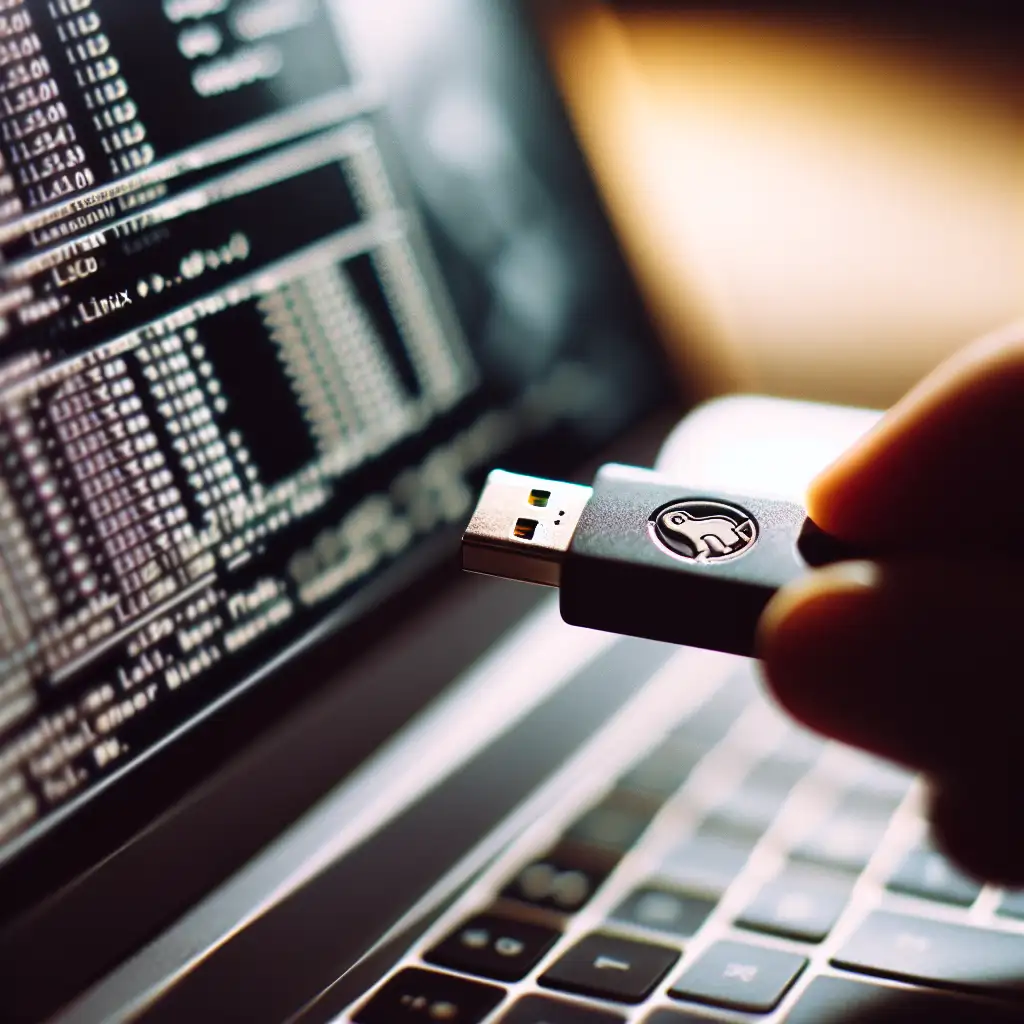How to Make a Bootable Linux USB: Practical Techniques for Consistent Deployments
Critical system down. No working OS environment—just bare hardware and a USB port. This is how most admins meet their first real bootable Linux USB workflow. When a desktop is bricked, or a new rack node needs OS imaging, a robust USB key beats stacks of DVDs and awkward PXE configs. Yet, imprecise steps, mismatched BIOS/UEFI setups, or botched image writes can stall even experienced engineers.
Below, distilled from field practice, is a workflow for creating reliable, boot-anywhere Linux USB keys, with key troubleshooting and automation notes.
Prerequisites and Choices
Set yourself up for first-pass success:
- USB Flash Drive: 8GB minimum for Ubuntu 22.04+ or Fedora 39+; fast, brand-name drives (e.g., SanDisk Extreme Pro) minimize write/verify time.
- ISO Image: Download from official sources; verify version and hardware compatibility. Example:
ubuntu-22.04.4-desktop-amd64.iso. - Imaging Tool:
- Windows: Rufus v4.x, balenaEtcher 1.18+.
- Linux:
dd(coreutils >= 8.32), GNOME Disks, or Ventoy 1.0.97+. - macOS:
dd(via Terminal), or balenaEtcher.
- Optionally, enable persistent storage for live environments—but know standard flash tools rarely configure this by default.
Step 1: ISO Integrity
Flaky downloads are common—especially via slow or unreliable connections. Always confirm your .iso file:
-
Grab the SHA256 sum posted alongside your ISO (not MD5; weak hashes lead to silent failures).
-
Validate your image:
Linux/macOS:
sha256sum ~/Downloads/ubuntu-22.04.4-desktop-amd64.isoWindows:
CertUtil -hashfile C:\Users\Alice\Downloads\ubuntu-22.04.4-desktop-amd64.iso SHA256Output must exactly match. Any mismatch—delete, re-download, repeat.
Step 2: Identify USB Device Safely
Caution: Picking the wrong device will overwrite critical disks.
-
Linux:
lsblk -o NAME,SIZE,MODELExample output:
sda 120G Samsung_SSD sdb 16G SanDisk_UltraHere,
/dev/sdbis the USB. -
macOS:
diskutil listEject via
diskutil unmountDisk /dev/disk2before imaging. -
Windows: Use Disk Management (
diskmgmt.msc) to confirm disk number matches USB drive capacity and label.
Step 3: Write the Image
A) Rufus (Windows, UEFI/BIOS-aware, recommended)
- Plug in USB, launch Rufus >= 4.0.
- Device: Select USB drive.
- Boot selection: Choose your ISO.
- Partition scheme: Match target hardware.
- Newer PCs: GPT + UEFI.
- Legacy: MBR + BIOS.
- File system: Generally FAT32. Some ISOs (over 4GB file size) require NTFS, but this can break UEFI compatibility. Rufus warns if so.
- Click Start. For write mode, default to “ISO Mode.” Only use “DD Mode” if targeted hardware fails to recognize the stick.
- When done: close Rufus, eject via system tray.
Gotcha: Some UEFI systems require Secure Boot off for non-certified images. Error: “Selected boot image did not authenticate.”
B) balenaEtcher (cross-platform, simple UI)
- Open Etcher, pick ISO, pick USB drive, hit Flash.
- No partition scheme configuration—Etcher auto-selects, but sometimes creates hybrid MBR/GPT layouts that confuse specific BIOS implementations (seen on several Lenovo Thinkpads).
- Wait until Etcher reports “Flash Complete”—do not eject early.
C) dd (Unix tools, no UI, fastest for scripts)
Example:
sudo dd if=~/Downloads/ubuntu-22.04.4-desktop-amd64.iso of=/dev/sdb bs=4M status=progress oflag=sync
Key flags:
oflag=syncfor safer device writeout.- Never append partition numbers (
/dev/sdb1)—must write to raw device. - Progress output shows bytes/sec. Tip:
pvcan show ETA, but requires install (sudo apt install pv).
Verification:
sync; sudo blockdev --flushbufs /dev/sdb
udisksctl power-off -b /dev/sdb # On systems with UDisks2
Step 4: Eject and Reboot
Unclean removal risks a partially corrupted image (particularly on Windows with write caching enabled).
- Linux:
sudo eject /dev/sdb - macOS: Disk Utility > Eject, or
diskutil eject /dev/disk2 - Windows: System tray → "Safely Remove Hardware"
Step 5: Boot and Validate
Insert into target hardware. Enter boot menu (common keys: F12, F10, Esc, Del). Select USB drive.
On success:
- UEFI/BIOS splash gives way to grub or the distro-specific installer.
On error:
- Boot option not present:
- BIOS may filter out non-UEFI USBs if “UEFI Only” set. Switch to “Legacy+UEFI” or toggle Secure Boot.
- “No bootable medium found” or stalls:
- Bad ISO write (failed SHA256, or USB itself defective).
- Hardware/USB port incompatibility—try rear-panel USB ports on desktops.
- USB 3.x sticks + some BIOS: revert to USB 2.0 port.
- Black screen post-boot:
- Hardware lacks driver support (rare with recent Ubuntu/Fedora, but can cripple pre-2012 laptops).
- Use alternate “safe graphics” option if available.
Sample log (boot failure, Secure Boot enforced):
error: Secure Boot forbids loading module from (hd0)/boot/grub/x86_64-efi/normal.mod
Persistent Storage (Non-Obvious Tip)
Want live environment changes to persist (i.e., write files, install packages between boots)? Most GUI USB creators don’t expose this option:
- Use
mkusb(Ubuntu only) orVentoywith persistence plugin. - Partition USB so main partition is
casper-rw(for Ubuntu live images). - Not all ISOs support persistence; inspect boot params (
boot parameters: persistent) before relying on this for field work.
Side Notes
- Ventoy: For multi-ISO USBs (diagnostic toolkit, multiple distros). Requires different process, but allows drag-and-drop ISO deployment, no re-write needed per OS update.
- Hardware quirks: Some cheap USB sticks throttle, causing slow install times. Consistent field results come with quality hardware.
In short, reproducible Linux USB keys require image verification, correct device targeting, appropriate BIOS/UEFI configuration, and attention to hardware edge cases. Don’t neglect post-imaging sanity checks—what boots on a VM or old ThinkPad may fail silently on modern secure-booted hardware.
Keep a tested USB creation script (bash/PowerShell) and validated ISOs in your toolbox. When downtime hits, your fix is one fast reboot away.
Note: Embedded targets (ARM, RPi) and proprietary OEM recovery ISOs often require tailored processes—consult device docs and don't blindly dd x86_64 images.
#Linux #BootableUSB #SystemDeployment #SysAdminTips #OpSec
